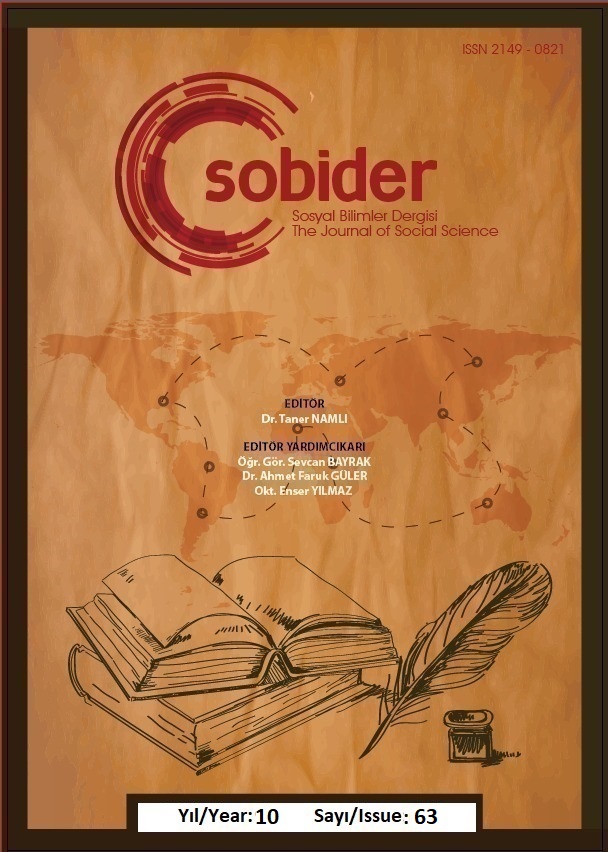Author :
Abstract
İranlı mutasavvıf Ferȋdüddin Attȃr tarafından 12. yüzyılda yazılmış olan ve temmet tarihi Hicri 997’de Edirneli Derviş Mustafa tarafından yazıya geçirilen Esrârnâme, bazı tasavvufî ilkeleri hikâye ve efsaneler yardımıyla açıklamak üzere kaleme alınmış olan önemli bir mesnevidir. Âyet ve hadislerden de faydalanılarak anlatılan bu hikâyelerde her şeyin iradesinin Allah’ın elinde olduğu, dünyanın değersizliği, bu dünyada ve ahirette mutlu olmak için ne yapılması gerektiği anlatılır. Başta Mevlâna olmak üzere birçok yazarı etkileyen Esrârnâme’de diğer tasavvufî eserlerde olduğu gibi insan, Allah yolunda ilerlemeye ve ideal kul olmaya davet edilir. Bu yolda mutlu olmaya çabalayan insan için kullanılan isim ve özellikle fiiller bir anlamda tasavvufun sınırlarını görmemize yardımcı olmaktadır. Bu çalışmada Terceme-i Esrârnâme metnindeki fiiller incelenerek dönemin tasavvuf anlayışının yazarın üslubundaki yeri anlaşılmaya çalışılmıştır. Fiiller, yapı bakımından tasnif edilmiş, daha sonra sözlüklerden yararlanarak etimolojik incelemeleri yapılmış ve Terceme-i Esrârnâme metninden tanıklar verilmiştir. Çalışmada en sık kullanılan fiiller üzerine çalışılmış ve eserin kelime hazinesindeki bir veya birden fazla anlamlı fiil kategorisindeki söz varlığı ortaya çıkarılarak önceki ve sonraki çalışmalarla karşılaştırma imkânı sağlanmak amaçlanmıştır.
Keywords
Abstract
Esrârnâme, written by Iranian mystic Ferȋdüddin Attȃr in the 12th century and written by Derviş Mustafa of Edirne in 997 Hijri, is an important masnavi written to explain some mystical principles with the help of stories and legends. In these stories, which are told by making use of verses and hadiths, it is told that the will of everything is in the hands of Allah, the worthlessness of the world, what needs to be done to be happy in this world and in the hereafter. In Esrârnâme, which influenced many writers, especially Mevlâna, as in other mystical works, people are invited to progress in the way of Allah and become an ideal servant. The nouns and especially the verbs used for people who try to be happy on this path help us to see the limits of Sufism in a sense. In this study, by examining the verbs in the text of Terceme-i Esrârnâme, the place of the Sufi understanding of the period in the author's style has been tried to be understood. Verbs were classified in terms of structure, then etymological analyzes were made using dictionaries and witnesses were given from the text of Terceme-i Esrârnâme. In the study, the most frequently used verbs were studied and it was aimed to provide the opportunity to compare with previous and subsequent studies by revealing the vocabulary in one or more meaningful verb categories in the vocabulary of the work.





